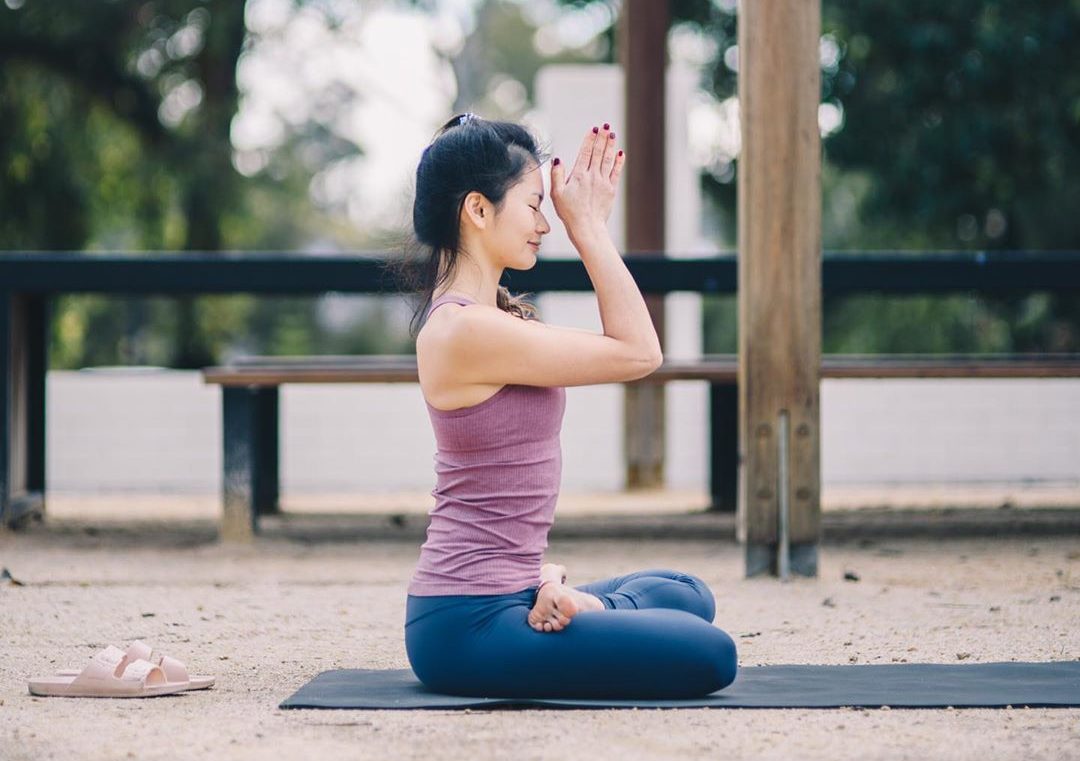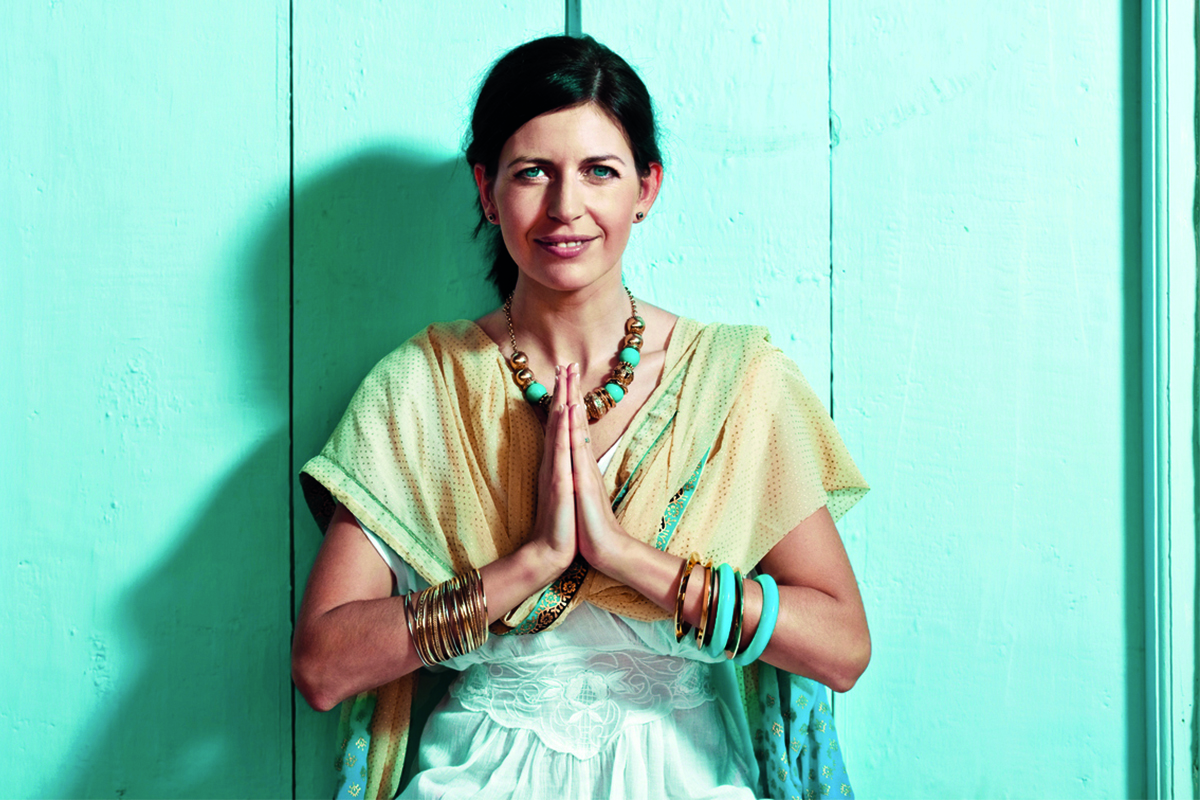Namaste : meaning and origin of this greeting
Want to know more about the Namaste that is common to do during your yoga session? What is its origin? What is the translation of Namaste? How and when to use it? Today, I explain everything about this greeting that often concludes your sessions.
During each yoga session, you have the opportunity to give more meaning to your movements. Yoga helps you move with purpose. This idea can even carry you little by little, outside of your mat. Yes, through yoga, you can change the way you move in this world. So, if you are looking for the meaning of Namaste, it is certainly because you intend to further explore the "why" of your postures and sessions. This is a great sign that yoga is beginning to naturally permeate your life.
Indeed, when you bow and say "Namaste", you may believe all your life that it simply means "Thank you". This is partly true. However, Namaste also has a much deeper meaning. Are you ready to discover it?
Definition of Namaste
The ancient Indian language found in the sacred texts of yoga is Sanskrit. Thus, in Sanskrit, the word Nama means "greeting" and té means "you". The expression can therefore be translated as "I greet you". You can find the same root in the greeting to the sun (Surya Namaskar) and the greeting to the moon (Chandra Namaskar). Namaskar thus means "greeting".
However, the translation of Namasté is deeper. Indeed, this gesture refers to the idea that there is a light in each of us. This light would be located in the region of the heart. Thus, this sentence accompanied by the hands joined towards the heart actually means: "I bow to the light that is in you. ». But also "The light that is in me, salute the light that is in you. »
There are also other translations of Namasté into French such as :
- I respect the place in you where the whole universe dwells.
- When you and I bow before our true nature, we are one.
- My soul recognizes your soul.
- We are the same, we are one.

Meanings of Namaste
As you will have understood, Namasté is more than a simple "thank you". It is a sign of gratitude for what is good in others. A way to share but also to highlight our equality.
In this way, when the yoga teacher begins a Namaste, he also transmits to his students the following idea: "We are two beings made of the same light. "This could evoke that despite the difference in level, the teacher/student relationship, there is no superiority or competition. Namasté is therefore both a gesture of respect and humility.
On the other hand, the student, who generally follows his yoga teacher in this gesture, makes it a gesture of gratitude. Namasté thus makes it possible to thank him for his sharing. But this gesture is also a sign of respect towards his teaching.
During a yoga session, it is also common for students to greet the people around them during Namasté. Thus, this gesture refers to equality, lack of competition, tolerance and kindness.
Namaste, is it only spiritual?
In reality, Namasté has a somewhat sacred side. This is why some may find it difficult to appropriate it. It may also be difficult to pronounce it in your first few sessions. For my part, I believe that you should not hesitate to put the meaning you want in it. Even if it is devoid of any spirituality. For example, for example:
- Thank you for this sharing / this session.
- I convey to you a little of the well-being that you have instilled in me.
- We are all equal.
- I recognize your value as a human being.
- I respect you for all that you are.

Namaste: is it reserved for yoga?
Namaste's gesture was made famous during the westernization of yoga. Nevertheless, it is not reserved for yoga, quite the contrary. Indeed, in India, Namaste is a greeting very used in everyday life. It means "hello" and sometimes even "goodbye". You will therefore often see it outside of a yoga class.
As you know, there are dozens of ways to greet each other around the world. Kissing each other, shaking hands or sometimes hugging each other... However, in Asia, the most common way to greet each other is to bow forward, joining hands towards the heart. You will find this way very common in Thailand, Laos but also in India. While in Japan, one simply bows forward without adding a hand signal.
In the end, all these greetings are also a sign of respect. For example, you will bow more when you are in front of a very respected person and you will bring your hands higher up to your head when facing a monk or an important personality for example.
Namaste in India, much more than a greeting
Moreover, although it is used by all, the gesture of Namaste is not insignificant in India. Its meaning is deeply spiritual. Indeed, Namaste evokes the idea that the Divine is present in each one of us. More precisely, it evokes that the same part of the Divine is present both in us and in the other. It is therefore a sign of recognition and equality. Moreover, the hands joined on the heart as a sign of greeting refer to the idea that we recognize, pay homage and respect the Divine that is present in the person we meet.
Of course, if you are not spiritual, you are not obliged to bring this connotation to this gesture that closes your yoga session. Nevertheless, I wanted to underline this meaning in order to help you understand the deep meaning of Namaste.

How to do the Namasté?
The most common way to salute with Namaste is to place your hands joined together on the heart. The palms are in the prayer position. Both thumbs touch the sternum and the other fingers are clasped together. To do the Namaste, the head is then tilted slightly forward. The eyes can be kept open. However, they are usually closed in order to concentrate on the intention behind this gesture. Keeping your eyes closed also allows you to bring and spread love through this greeting.
To perform Namaste, it is also common to place both hands joined together on the heart, and then to bow slightly, bringing the hands joined together to the forehead. Then, one can bring the hands back towards the heart by standing up. This greeting is an even deeper mark of respect.
In addition, one way of doing the Namasté gesture consists in positioning his joined hands on the top of the forehead, then in front of the face and then on the heart. This means greeting God, then our spiritual guide, then our fellow men. You will sometimes have the opportunity to practice this gesture during yoga sessions. For example, when you practice the sun salutation. If this meaning doesn't resonate with you, you might as well make it your own as well. For example: "I salute my soul, my mind and my heart". Personally, I appreciate the beauty of this gesture and its very solemn side. It helps me to focus on my practice and make it more meaningful.
Finally, it happens that we perform Namaste by bringing our hands from the heart to the forehead and then bending completely on the floor, keeping our hands together and placing them on the floor in front of us. This greeting is also deeper and more respectful than a simpler Namaste.
Namaste is usually pronounced before or while making the gesture. However, in Asia, the only greeting means Namaste, and it is not always pronounced. Ainisi, if you don't want to pronounce it, you should know that it is not at all obligatory. The gesture really has the same meaning. It is therefore not a mark of disrespect.
When to do Namaste during a yoga session?
Most of the time, Namaste concludes a yoga session. It is started by the teacher and then taken up by the students. Nevertheless, the gesture can also be done at the beginning of the class. It then allows to begin the session and to underline its sacred character. Sacred, because a yoga session is a moment of encounter with oneself, that it helps us to take time for ourselves and to know ourselves better. We can also do Namaste as a sign of respect for our teacher who takes time for us or simply out of gratitude for being here today.
located in the Heart Chakra, at the chest level. Indeed, the path of the heart is often the one that leads us to the truth, that guides us through our existence (hence the expression "listening to your heart"). Concluding a yoga session with the gesture of Namasté is therefore a good way to keep this positive energy off the mat.
Namasté is an excellent way to enter in communion with what surrounds us. It allows us to breathe and transmit positive energy. This is what this world certainly needs the most.
On this blog, I address all types of people, yoga practitioners or not, beginners or not, who will not especially know what is behind the term Namasté. Nevertheless, for me, this term has a very strong meaning, which marks the recognition of the other, which underlines the value of each one and which also means thank you. This term at the end of the article therefore evokes the gratitude to know that you are interested in discovering my articles, the pleasure to count each of you, as a unique human being, among the visitors of the site, and the desire to remind you of your own light. So, for this time again...


